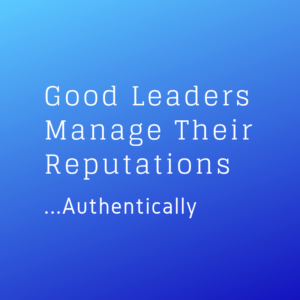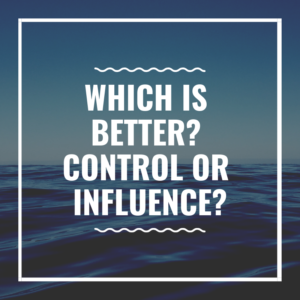Mary E. Marshall's Blog, page 17
February 26, 2019
Good Leaders Know How to Manage Retention
 Ever heard the phrase – people don’t care what you know until they know you care? Good leaders know that to manage and retain good employees they have to let their employees know they care. Productivity is a result. It’s not the other way around. I’ve heard leaders and managers say, “I’ll wait to see what they can do before I engage with them.” It ends up having exactly the opposite effect. Without engagement, productivity will not happen.
Ever heard the phrase – people don’t care what you know until they know you care? Good leaders know that to manage and retain good employees they have to let their employees know they care. Productivity is a result. It’s not the other way around. I’ve heard leaders and managers say, “I’ll wait to see what they can do before I engage with them.” It ends up having exactly the opposite effect. Without engagement, productivity will not happen.
An article in Inc. Magazine recently reported that 85% of employees are not engaged – that’s an alarming statistic for any leader.
There is one key to changing this trend. Stop treating people as a resource whom you just pay and expect to do their jobs. Start treating them like worthy business partners in the pursuit of a more human-centered workplace.
According to the article, this means:
Caring about employees being in positions that are suited for their strengths.
Helping them learn and grow with managers that actually care about them.
Granting them the autonomy to do their work without micromanagement.
These are not heavy lifts, but they do require good leadership. This might be the one thing that is in short supply in most organizations, and not because leaders don’t want to be effective, but because they are not trained and do not intuitively know how to motivate people. People are promoted to management because they succeeded in their previous role, not necessarily because they proved their management chops.
We need to start selecting managers and leaders for their ability to engage and motivate people – those who can effectively get work done through others – NOT get work done themselves, through intimidation or micromanaging. This requires training and coaching and like any other skill, time to learn and get it right. We would not put a novice skier in the Olympics and expect them to win. We spend years helping them train, building on a natural strength so they can get to the point that they might be qualified to compete. It’s unfortunate that we don’t have a similar litmus test for managers and leaders.
So, what can you do to see how engaged your employees are? Ask. Surveys are a good thing and not complicated or expensive. Measure your retention. If it’s below 80%, you might have a problem. Do your employees feel empowered to take risks, feel like they are learning and being rewarded and recognized for good work? If the answer is yes, then you’re doing well. If it’s a maybe or a hard no, you may want to start with your managers and find out what’s missing.
The post Good Leaders Know How to Manage Retention appeared first on Mary Marshall // CEO Coach.
February 20, 2019
Maximum Productivity and Creativity
 I recently reread this article in Fast Company where writer Drake Baer talks about 90-minute productivity cycles and why we need to unplug to be our most effective. He references the “rest-activity cycle” that researchers have found to be the basis for an optimum night’s sleep, and now, they believe the same principle applies to work as well. Since he wrote this, even more has been published about the need for breaks, proper sleep and more in order to be optimally effective and productive.
I recently reread this article in Fast Company where writer Drake Baer talks about 90-minute productivity cycles and why we need to unplug to be our most effective. He references the “rest-activity cycle” that researchers have found to be the basis for an optimum night’s sleep, and now, they believe the same principle applies to work as well. Since he wrote this, even more has been published about the need for breaks, proper sleep and more in order to be optimally effective and productive.
This is interesting to me because I was reminded of a day last fall when I spent a good deal of time working in my gardens and found that I could work for about 90 minutes, then needed a break not just physically, but mentally to plan my next phase of work. When I stretched it to 2 hours or more without a break, it is not nearly as productive, (or fun). However, an even more interesting thing happened while I was working. The answer to a problem I had been mulling all week suddenly appeared before me. Later that night, I spent about 90 minutes writing it down and filling in the various pieces of the project.
In a previous blog of mine, I explained how solutions appear when our mind is focused on something completely different than the project at hand. So, I’m now putting the two concepts together and wondering if this isn’t the answer to not only productivity but maximum creativity.
Just think about your current day. How many breaks do you take? Do you spend 90 minutes on a project and then take a 20-minute break? If your workplace is like most, you’re interrupted constantly and have a series of 30 and 60-minute meetings to discuss and decide on things. If the 90-minute rule for productivity applies, we’re shortcutting the process with these meetings. I’m not suggesting that we make all meetings 90 minutes I’m suggesting that some may not be necessary at all and that we really evaluate the purpose of the meeting in light of the combined goals of optimum productivity and creativity. If the meeting is an information share only, I would simply ask if there might be another way to deliver the information vs. in a meeting?
Just for this week, try it for yourself. For those big projects or chunks of work, you have to do, schedule 90 minutes of uninterrupted time to work on or complete the project. Schedule multiple if needed. Always take a 20-minute break between and measure how much you get accomplished as compared to the previous week. See if any “ahas” showed up, solutions to completely unrelated problems, and how you feel at the end of the day. Productivity and creativity are not just “things that we do,” they are states of mind and I am positing that if we think or feel we are more productive or more creative, we will be.
If it works for you, share it with your team. There is nothing more exciting than to lead a team of highly productive, creative individuals that are having fun while doing it.
The post Maximum Productivity and Creativity appeared first on Mary Marshall // CEO Coach.
February 13, 2019
Good Leaders Manage Their Reputations…Authentically
 When contemplating alternative solutions to a problem or reactions to a situation, I frequently find myself giving this advice “what story do you want told about it or about you?” Reputations are yours and yours alone – to make, to keep and to manage. Yet, so often we give them up without much thought to the long-term impact that it might have.
When contemplating alternative solutions to a problem or reactions to a situation, I frequently find myself giving this advice “what story do you want told about it or about you?” Reputations are yours and yours alone – to make, to keep and to manage. Yet, so often we give them up without much thought to the long-term impact that it might have.
In today’s politics, (or any era really), the complaint about politicians is that they say whatever the audience wants to hear. They are often pandering, catering or speaking to their audiences believing it will in some way help them in the future. The reality is that most humans are pretty good at sniffing out inauthenticity and that becomes the reputation of that politician. Saying what people want to hear might feel right in the moment, but if it’s not true or you don’t believe it, you just created your reputation. Think about it, one negative action or impression has the ability to wipe out every previous good act before it. The debacle in Virginia politics right now is case in point. No one remembers what the three officials did or did not do before the various scandals hit. Now it’s all about the scandals and the way each have reacted to it. It supersedes anything else they may or may not have done. It becomes their permanent reputation.
Authentic reputations are not made by “spin.” Spin is just another way of saying alternative facts, which of course there is no such thing. There are opinions, interpretations, and beliefs about the facts, but facts remain facts. Good reputations are made by consistent, straightforward and trustworthy behavior. Does this person have a track record of behaving this way? Can they be trusted?
Early on in my career, I did and said things that although seemed funny or appropriate at the time built a reputation that I’m not sure I even thought about. Fortunately, I had someone ask me if that’s the story I wanted to tell? Somewhat ashamed, I had to admit it was not. From that point on, I was careful to only say what I really meant and what was consistent with my story. It’s not about how it looks, it’s about you and your story. Who are you and what do you stand for? Reputations are memorable for those moments when we stand up for our values regardless of who is looking. And those moments when we act in opposition to our values will cause us to create an unintentional reputation.
One of Marshall Goldsmith’s “Leadership Habits” that he calls “behavioral tics,” is the “excessive need to be me.” Although you certainly have every right to “be you,” as a leader if you are not considering the impact on others, you may be creating a reputation that you will come to regret.
Remember it takes a lifetime of consistent, authentic behavior to create a good leadership reputation. It will be lost in that one moment of haste or hubris. Don’t let your reputation be hijacked by your own carelessness or someone else. It’s your story to tell.
The post Good Leaders Manage Their Reputations…Authentically appeared first on Mary Marshall // CEO Coach.
February 6, 2019
Which Is Better? Control or Influence?
 As a leader, the distinction of “control vs. influence” is an important one to consider. Which is better? The answer is probably “it depends,” however, when working with employees or your team, influence can be so much more effective that it’s not even a contest.
As a leader, the distinction of “control vs. influence” is an important one to consider. Which is better? The answer is probably “it depends,” however, when working with employees or your team, influence can be so much more effective that it’s not even a contest.
As an entrepreneur, sometimes control is the only thing we think we have to keep all the balls in the air. Unfortunately, when you have “control” or perceived control of everything you become the bottleneck, and everyone relies on you to do or approve things. Additionally, you will get labeled as a micromanager and there are not many who like working for a micromanager. This becomes the Achilles’ heel for a lot of entrepreneurs.
Another common challenge based on control is growing and running so fast that the response to someone on your team asking you to slow down and explain is annoyance. A typical leadership pitfall is to think, “well, it’s just easier to do it myself.” This ends up being a self-fulfilling prophecy, (and not in a good way), as you will end up doing EVERYTHING yourself.
Sometimes the belief that control is the right way to manage and lead is because you think you are the smartest person in the room. You might be, but probably not about everything. If you surround yourself with people “less smart” than you simply to boost your ego and make sure no one outshines you, you will end without any loyalty on your team. People are only willing to do things for people who don’t respect them for a very short time. Eventually, they move on to a place where they are appreciated for what the bring to the table.
Fear of delegation, (because of concern things might go badly), or the lack of knowledge of “how” to do something are some of the most often stated reasons for the lack of delegation and therefore control by the leader. These issues are also self-perpetuating – the less you delegate, the more you will have to do and the less you get done. Not trusting your people and willingness to delegate will keep you stuck at the same business stage and prevent growth.
“Influence” on the other hand, allows for things to be delegated. It says, go ahead and try, I will nudge you in the right direction and catch you if you fall but you “do it.” Influence is what people use to grow companies. A leader can only be so many things to so many people, but first and foremost, it should be about being the leader. If you are the doer, you are not leading. However, if you are behind the scenes influencing things to be done – quietly – a lot more will be accomplished.
Influence is a supportive conversation, a nudge to try something new, using your experience to mentor up another to do well. Influencers are mostly quiet but often larger than life characters that “know” something should be done a certain way. Influencers on social media sites are those who have attracted a large following – just make sure the following is real and genuine before jumping on the bandwagon. Think about the mentors you have had over time – most likely those that exercised influence were more impactful than those that wielded control over you.
If your job as the leader is to grow your company and grow your people, (my definition), which strategy, control or influence is more likely to have success? If you ask the people you are leading, 99% of the answers will be influence. Try it, it’s a lot less work than control!
The post Which Is Better? Control or Influence? appeared first on Mary Marshall // CEO Coach.
January 30, 2019
Good Leaders Are Loyal
 David Brooks of the New York Times wrote a great piece about loyalty comparing two philosophers, William James, and Josiah Royce. You may not have heard of Josiah Royce? He believed that to have a functioning society, we need unity, not division, and above all, we need loyalty to one another.
David Brooks of the New York Times wrote a great piece about loyalty comparing two philosophers, William James, and Josiah Royce. You may not have heard of Josiah Royce? He believed that to have a functioning society, we need unity, not division, and above all, we need loyalty to one another.
What good leaders know is that if they want loyalty from their teams, they need to go first. They need to show loyalty – authentically – to those who would follow them. It’s a mutual exchange, not a one-way street. Leaders who demand, but don’t return loyalty, will get it to their face and behind their backs will be all those behaviors that we deplore like backstabbing, duplicitousness, and deceit. Lack of coherence in a leader – “do what I say, not what I do” – creates this type of break in behavior within a group. These are fractured cultures – unintentional cultures that do not produce results for anyone.
Leaders who show loyalty are explicit in what they expect, showing people how they can be successful, what loyalty looks like, and the behaviors that are associated with it. Leaders who demand loyalty and don’t return it generally show their narcissism – I am the leader, therefore, you must follow – believing that title alone gives them the power. Let me be clear, no one earns the right to loyalty simply by being elevated into a leadership role. Some leaders confuse compliance with loyalty, but they are very, very different. Think about all those federal government workers who were forced to work without pay because their positions were deemed “essential.” In most cases, it wasn’t because of loyalty to the president and his agenda that they showed up every day. They were loyal to their jobs, their teams, and in almost all cases, needed the pay from their job to survive.
Good leaders model loyalty. When an employee or team member makes a mistake, it’s not fatal, it’s a learning opportunity and patience is practiced. Standards are upheld and those who choose not to meet them will eventually be let go because the leader is loyal to the mission, the vision, and the team and will not tolerate those who try to undermine or ignore it. Loyalty looks like talking through differences rather than making people wrong. It means looking for the good in all people, not just those we agree with. Loyalty looks like people knowing they have Trust, Compassion, Stability, and Hope in the workplace (from the Gallup Strengthsfinders Polling).
Loyalty is not blind, trust but verify. Good leaders don’t make people “earn” loyalty. Just like trust, they give it and then check to make sure it is warranted. How loyal do you think your team is to you as the leader? More importantly, how loyal are you to the team?
The post Good Leaders Are Loyal appeared first on Mary Marshall // CEO Coach.
January 16, 2019
Good Leaders Keep an Open Mind
 One of my clients shared this YouTube Video with me this week and I couldn’t stop laughing. These two teenagers are trying to figure out how to dial a rotary phone and it’s hilarious to watch them try without success to do something that any of us over 50 takes for granted because it’s all we knew when we were kids. It got me thinking about why sometimes it’s so hard for people to learn new things and why other times it’s quite easy.
One of my clients shared this YouTube Video with me this week and I couldn’t stop laughing. These two teenagers are trying to figure out how to dial a rotary phone and it’s hilarious to watch them try without success to do something that any of us over 50 takes for granted because it’s all we knew when we were kids. It got me thinking about why sometimes it’s so hard for people to learn new things and why other times it’s quite easy.
In the case of these teenagers, they are trying to learn how to do it with their current understanding of a phone – meaning how a smartphone works. They keep picking up the receiver and putting it down thinking they need to reset it. If they weren’t using their current frame of reference for how a phone works, would they have been able to figure it out sooner? How often are we prevented from seeing another way of doing something because we’re boxed into our current beliefs about what we “know?” Did their knowledge get in the way of learning? I think it did.
As we hit 2019 and look at our strategic plans, goals, and all the things we want to change or accomplish this year in our businesses, how will we execute change with old paradigms stuck in our heads? What are we trying to do that’s new or different using the old thinking or “context” from what we did in the past? Experience is good, history is useful, context is important, but how is it actually blocking us from seeing a way forward or learning something new?
Sometimes learning can be accelerated if we act as if we don’t know anything. This is sometimes articulated as “starting with a beginner’s mind.” Because two approaches perform the same function doesn’t mean they operate the same way. If we are trying to jump start our learning but are using our current knowledge as a launch pad what might we be missing? Just as our two teenagers found out, current knowledge got in the way of learning. Even the hints their parents were giving them didn’t make sense because they were using current context to make assessments. In other words, today’s “how” was a blinder for learning.
Take a look at your goals and make sure that you aren’t looking at ways to achieve them that are constricted by past best practices, or old ways of believing or outdated knowledge. There might be some opportunities to speed things up!
The post Good Leaders Keep an Open Mind appeared first on Mary Marshall // CEO Coach.
January 9, 2019
Good Business Culture Is Good Business
 One of my long-held beliefs about business is that culture is the key to success for any business large or small. My new book The Great Culture [Dis]Connect contrasts “good” and “bad” cultures, (which are really just ineffective cultures), and shows you a way to create a great culture in your business and why it matters.
One of my long-held beliefs about business is that culture is the key to success for any business large or small. My new book The Great Culture [Dis]Connect contrasts “good” and “bad” cultures, (which are really just ineffective cultures), and shows you a way to create a great culture in your business and why it matters.
As you can imagine, I was very interested to read this article during the holidays on how small businesses are changing their cultures. It’s a great article and discusses what many companies are “doing” to have a better culture in their business to attract more and better talent. The reason for my emphasis on “doing” is that you can’t actually “do culture,” you have to live it. In most of the cases featured in the article, I believe it’s more that they are actually defining their culture and creating ways to live it that are more aligned with who they are.
Any company who decides to change policies to attract employees but doesn’t really believe in the program has more of a gimmick than a policy. Take the example of a local company that decided to create a flexible work schedule. From everything they had heard from their current workforce and interviewing potential employees, this was important to attract talent. However, when HR made the proposal, it really only allowed employees 1 day per month that they could work from home, which by any definition doesn’t really mean “flexible” work schedule. In addition, the CEO really disliked the idea of even having to offer this benefit. He believed people should be in their seats from 8-5 just like he had always done. This resulted in new hires feeling a bit like they were on the receiving end of a “bait and switch” when they found out what the flexible schedule really meant in this organization. The culture hadn’t changed, but some window dressing had been added to attempt a makeover.
Contrast that with the company who had team members interview candidates to talk about culture without management in the room. This is a gutsy move on the part of the employer but strongly communicates the value of transparency and shows that they really value the culture and that employees really do have a say in it.
Culture matters and not all cultures have to be the same. You should hire based on what your culture is. Your policies need to reflect who you genuinely are, or it will become apparent pretty quickly what you really value. Then you have a bigger problem because people feel cheated or that the company was dishonest.
Culture starts with your values, then creating policies and procedures that reflect them. For a culture to really thrive the whole organization must embrace and live it.
The post Good Business Culture Is Good Business appeared first on Mary Marshall // CEO Coach.
January 2, 2019
It’s 2019 – Is a Happy Workforce Possible?

I was reviewing a New York Times Op-Ed piece “Why You Hate Work” that pointed out just 30% of the American workforce is satisfied. That’s a pretty dismal number and does not bode well for productivity, which in turn, affects the bottom line. Only 13% of the worldwide workforce is satisfied which is truly frightening considering that work/production is what makes the world go round.
The researchers found that there are 4 things workers are looking for in the workplace:
Engagement
Renewal
Value
Focus
Engagement is defined as more than just engaged in one’s job, it’s engagement in the organization, the cause, the mission or the greater good that the product or service is attempting to achieve. This is especially important for the millennial generation, they want to believe in something, and to make a difference. They found that the way people “feel” about their work directly correlates to how well they perform which translates to productivity. This is not a new concept, but certainly worth revisiting and asking ourselves as employers, how engaged are our employees?
Renewal: This is the ability to take a break, to recharge and refresh. The study found that those employees who are able to take a break every 90 minutes report a 30% higher level of focus than those who don’t. They report a 50% greater capacity to think creatively and report a higher level of well-being. The more they work over 40 hours, the worse they feel. The 40-hour work week was put in place for a reason – humans are not robots.
Value: Feeling valued by one’s supervisor or leader has a significant impact on the way employees perform. It contributes to their sense of well-being and safety. If a person feels valued, they will be much less likely to be stolen away by a competitor, even when big dollars are dangled in front of them.
Focus: Interestingly, only 20% of those surveyed said they were able to focus on one task at a time at work, meaning, they were expected to focus on several. However, those who could focus on just one were 50% more engaged! Only 50% said they could effectively prioritize their tasks, but when they could, they could focus on one thing at a time.
Clearly, we have a lot of work to do to help employees in the workplace! However, if we focus on these four areas, the dividends to the employees will be huge and the productivity (and profits) will follow.
Large companies will have a more difficult time with this because they will try to make it a process – likely making employees feel less valued and more used. Small employers, on the other hand, can likely implement these with more authenticity and speed. Small companies are more agile, less bureaucratic and better able to listen and respond to the need. It doesn’t take much and you could make your company an “employer of choice” in time for the new year!
The post It’s 2019 – Is a Happy Workforce Possible? appeared first on Mary Marshall // CEO Coach.
December 20, 2018
Leadership and Gratitude
 As we work to get ready for the end of 2018 and the holidays, it’s easy to get so caught up in the work that we forget what the season is all about. It’s a time of contemplation and assessment but also one of deep appreciation. gratitude, and thankfulness for all those who have touched our lives throughout the year.
As we work to get ready for the end of 2018 and the holidays, it’s easy to get so caught up in the work that we forget what the season is all about. It’s a time of contemplation and assessment but also one of deep appreciation. gratitude, and thankfulness for all those who have touched our lives throughout the year.
I appreciate all of you who have helped me during 2018 with my work, my new book, and my life. I am so grateful to all of the entrepreneurs and executives who have let me have a seat on their journey – for a passenger’s view into the great ride of leadership. I learn so much daily from each and every one of you that I’m always in awe of your brilliance. You make a difference in the lives of your employees, your customers and your family every day.
So often when we have problems in an organization, we look at employees first as the possible cause. It certainly can be, and in some cases and it’s a great place to start. I often hear lack of “employee engagement” as the root cause of the organization’s problems and yet no clear way to solve the issue. Employee engagement has so many different facets that without a deep dive in to the organization, the annual survey is unlikely to find the real problem.
Where does this leave you as a leader? Start with “thank you.” Start with appreciation for everything that your employees do for your customers, for you and for each other. Just a simple act of appreciation does wonders for employee engagement. I’m not suggesting that this is where you stop, I’m suggesting this is where you start. Research has shown that employees want a place to belong, a sense that they are authentically appreciated for their contribution and a place to grow. This can be your gift to each of them and it simply starts with that very human connection of appreciation.
As they say, there is no time like the present to begin to create a workplace that fosters growth, respect, and appreciation. This time of year lends itself to that easy beginning. Gallup research shows that the four things employees are looking for in a workplace are Trust, Compassion, Stability, and Hope. Give them these gifts starting with hope for a better opportunity to learn, grow and belong in 2019.
Thank you to each of you on my journey. I appreciate all that you have given me and wish you all a very happy holiday season!
The post Leadership and Gratitude appeared first on Mary Marshall // CEO Coach.
December 5, 2018
The Great Culture [Dis]Connect
 I would like to sincerely thank all of you who have watched and listened to my videos with excerpts from my new book, The Great Culture [Dis]Connect. The official release is Friday, December 7th and it will be available on Amazon starting that day. If you found the videos helpful and informative, I would encourage you to buy the book as you will find the blueprint for creating a great culture in your business.
I would like to sincerely thank all of you who have watched and listened to my videos with excerpts from my new book, The Great Culture [Dis]Connect. The official release is Friday, December 7th and it will be available on Amazon starting that day. If you found the videos helpful and informative, I would encourage you to buy the book as you will find the blueprint for creating a great culture in your business.
We hear so much about culture these days that I know it can be overwhelming to know where to start, let alone really calculate “why” it matters in business. It matters in business because you want it to be your vision, your values, and your culture, not one that has been hijacked by a bunch of cultural misfits. If you’re not the entrepreneur, leader or owner, it matters because you will never be your best self if you’re not in a place that shares your values and a place that you can authentically believe in. Culture matters and The Great Culture [Dis]Connect is a how-to guide for creating and fixing culture for both financial and personal satisfaction.
Thank you again and I hope you enjoy the book!
The post The Great Culture [Dis]Connect appeared first on Mary Marshall // CEO Coach.



